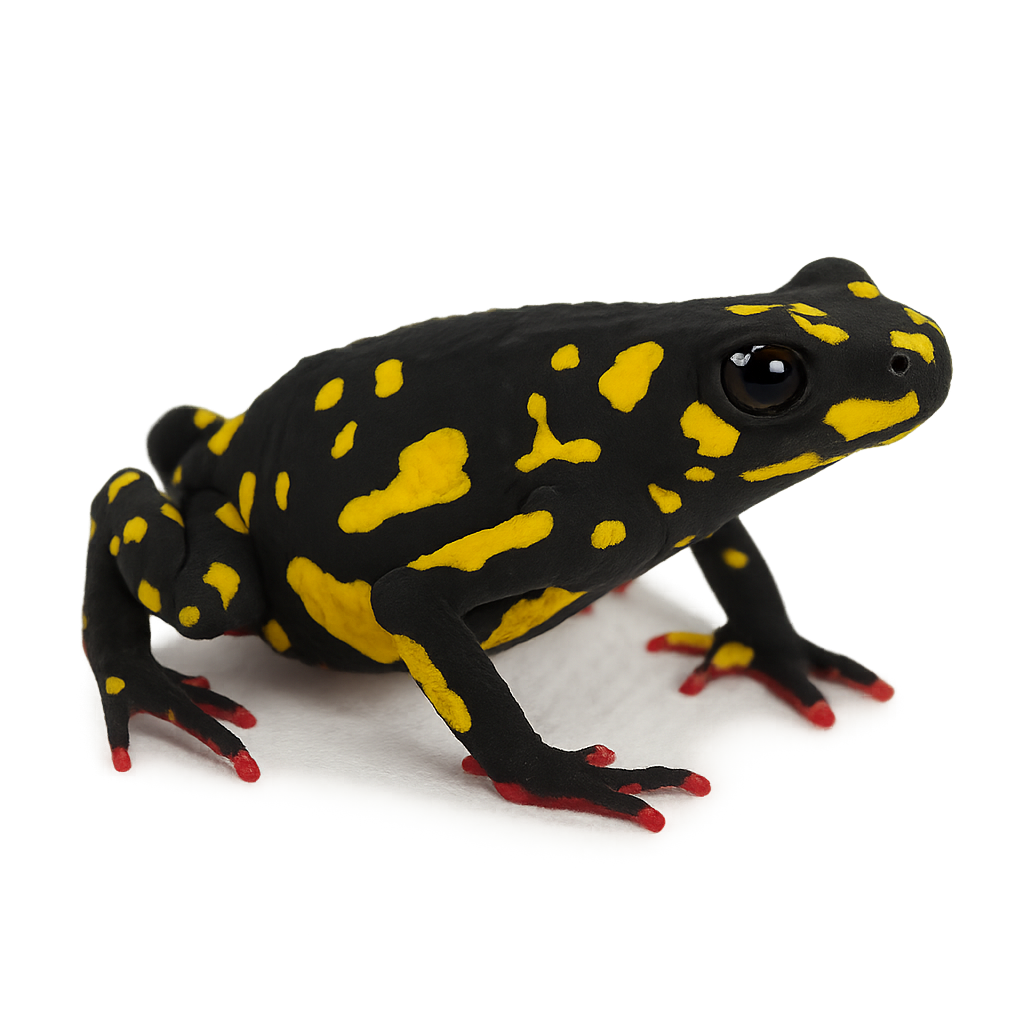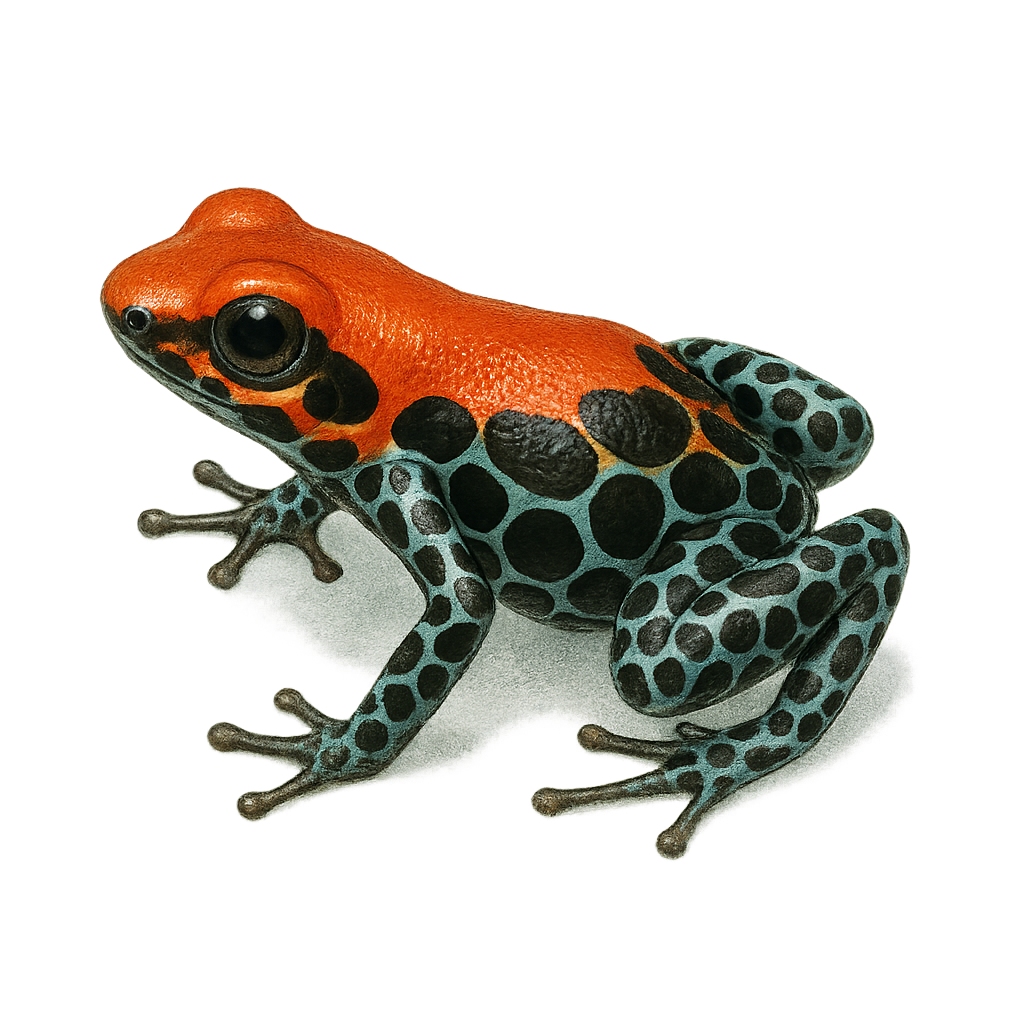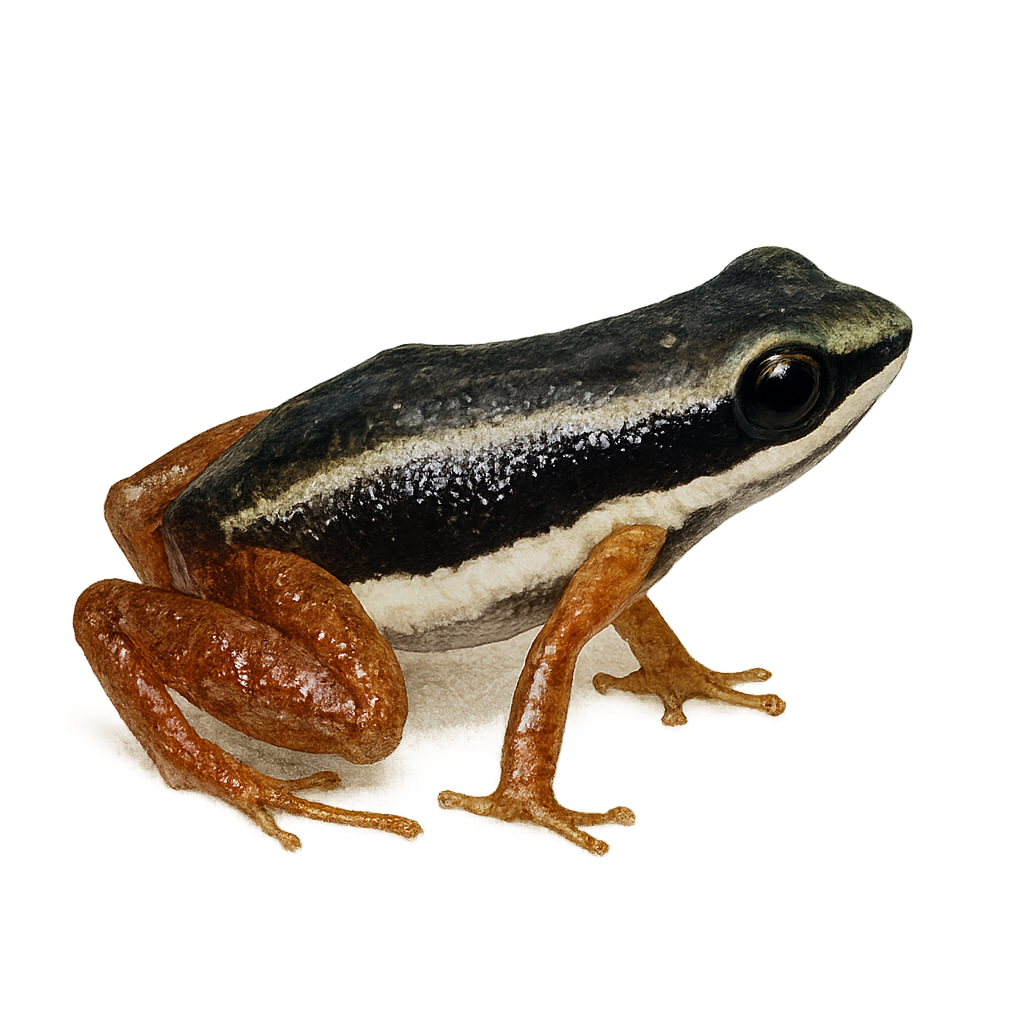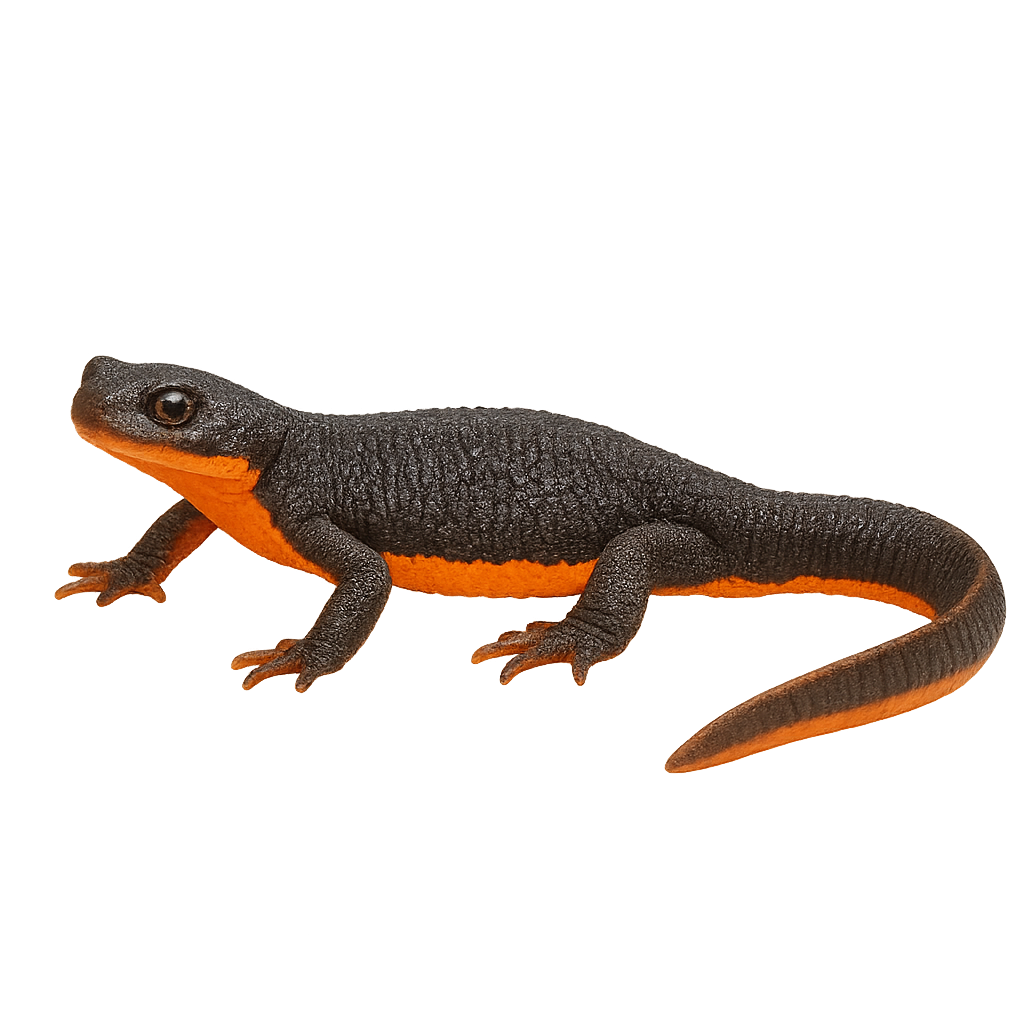Melanophryniscus stelzneri is a small, colorful toad native to South America, primarily found in Argentina and Brazil. Its skin is often black with red or yellow patterns, allowing it to blend into its natural environment. This toad is known for its unique defense behaviors, such as inflating its body to appear larger to predators. It prefers humid habitats like rainforests and wet grasslands, where it can hide under leaves and rocks. Although its population is stable, it is threatened by habitat loss due to agriculture and urbanization.
The Ranitomeya reticulata, commonly known as the reticulated poison frog, is a small, brightly colored frog native to the humid rainforests of South America, particularly in Peru and Ecuador. It is renowned for its vibrant skin, featuring a complex pattern of black reticulations on a bright yellow or orange background, making it a fascinating specimen for herpetologists and frog enthusiasts. This species is diurnal and primarily feeds on small insects and arthropods. Although its skin is toxic, it poses no threat to humans unless handled improperly. The Ranitomeya reticulata plays a crucial role in its ecosystem by regulating insect populations and serving as prey for certain predators.
The Ranitomeya cyanovittata, commonly known as the blue-banded poison dart frog, is a small, brightly colored frog native to the humid rainforests of South America. It is particularly notable for its vivid blue bands that contrast with its black body, a pattern that serves to warn predators of its toxicity. Typically measuring between 1.5 and 2 cm, this species is a fascinating example of aposematic mimicry. It primarily feeds on small insects and arthropods, which it actively hunts in the leaf litter. Its skin secretes toxic alkaloids, an effective chemical defense against predators. Although its population is stable, it is threatened by deforestation and habitat destruction.
The Silverstoneia flotator, commonly known as the rainforest rocket frog, is a small amphibian species found primarily in the humid rainforests of Central America, particularly in Costa Rica and Panama. It is distinguished by its small size, typically between 1.5 and 2 cm, and its vibrant coloration ranging from brown to green with black patterns. This frog is often observed near streams where it breeds. It is known for its high-pitched, repetitive calls used to attract mates and mark territory. Although relatively abundant in its natural habitat, habitat destruction poses a potential threat.
The Red-eyed Tree Frog is a small arboreal frog primarily found in the humid tropical forests of Central and South America, particularly in Costa Rica and Panama. It measures about 5 to 7 cm in length and weighs between 10 and 20 g. Its body is generally green, with yellow or blue spots on the sides, and its eyes are bright red, making it a particularly recognizable species. The Red-eyed Tree Frog is insectivorous, primarily feeding on flying insects like mosquitoes and flies. It is nocturnal and spends the day hidden in foliage or tree crevices. While its population remains stable in certain protected areas, it is still threatened by deforestation and pollution of its natural habitat.
The Litoria chloris, commonly known as the Red-eyed Green Treefrog, is a species of arboreal frog native to Australia. It is distinguished by its bright green color and characteristic red eyes. Measuring between 4 and 7 cm, it has webbed feet that allow it to leap agilely from tree to tree. This species is primarily nocturnal and feeds on insects, which it captures with its sticky tongue. It inhabits tropical rainforests, often near water bodies. The green tree frog plays a crucial role in the ecosystem by regulating insect populations. Although currently classified as "least concern" by the IUCN, deforestation and climate change threaten its natural habitat.
The Rio Madeira poison frog, Adelphobates quinquevittatus, is a small, brightly colored frog native to the rainforests of South America, primarily in Peru and Brazil. Known for its distinctive stripes, usually black and yellow, this species thrives in the humid, shaded areas of tropical forests, feeding on insects and other small invertebrates. Like many poison dart frogs, it secretes potent toxins through its skin, serving as an effective deterrent against predators. It is often found near streams or ponds, where it lays its eggs. The tadpoles develop in water before transforming into adult frogs.
The Rough-skinned Newt, or Taricha granulosa, is a species of salamander found along the Pacific coast of North America. It is easily identified by its rough, grainy skin and dark brown coloration, with a bright orange underside. This newt is particularly famous for its potent toxin, tetrodotoxin, which deters predators. Typically measuring between 12 and 22 cm, it inhabits moist forests, streams, and ponds. During the breeding season, it migrates to still waters to lay eggs. Despite its toxicity, it plays a crucial role in the ecosystem by controlling aquatic insect populations.









